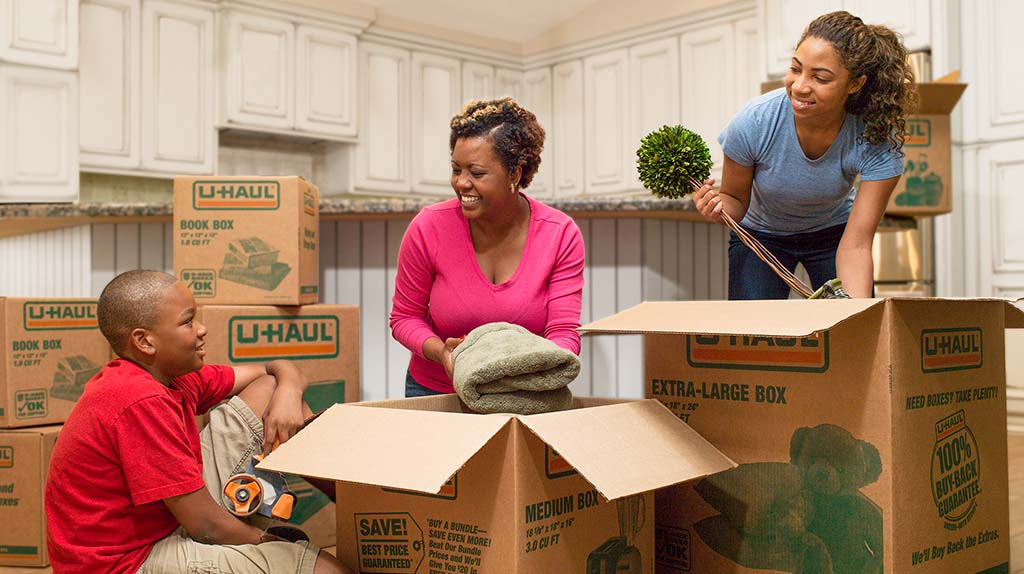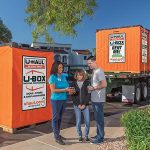We’ve compiled together an ultimate checklist with 92 essential steps to keep in mind as you’re going along with your moving plan. Want to check off items as you go? Download our moving house checklist.
DOWNLOAD MOVING HOUSE CHECKLIST
Whether you’re moving across the street, across town, or across the country, you’ll have plenty of tasks to complete on your moving timeline before your move, on the day of your move, and after you’re done moving. You can stay organized with Moving Help®.
2 to 4 Months Before You Move
1. Create a moving binder
You’ll want to put together all moving-related documents and checklists into a moving binder, so it’s all in one place. If your new company is paying for you to move, you should hold onto any moving-related receipts. That way, you’ll get reimbursed for all moving expenses.
2. Create a moving budget
A budget will help you stay organized on what you need to purchase and help you avoid overspending during your move. You can create a list of all anticipated expenses — moving transportation type, packing supplies, and any other related expenses — and of course keep part of your budget open for unexpected expenses.
3. Keep important documents together
Your social security card, tax documents, passports, birth certificates, and medical documents all belong together. This way, you won’t lose any crucial documents, and they’ll be with you personally on moving day.
4. Give notice to your landlord
Whether you rent an apartment or house, you’ll need to make sure you give enough notice that you’re not planning to renew your lease. Your lease will specify how much time you need to give notice.
5. Set reminders for remaining appointments
Make sure you keep track of all remaining appointments — doctor, dental, pets, children, etc. — before you leave your current address. You’ll want to make sure everyone has prescriptions filled and pet vaccinations up to date.
6. Measure all furniture
You can’t move furniture if it doesn’t fit into your new home, or you can’t move it out of your home without disassembling first.
7. Back up your files
Make sure to back up any electronic files. You’ll feel better knowing anything digital is backed up properly.
8. Identify the type of move you’re doing
You’ll need to figure out whether you want a DIY, hybrid, or a full-service move. A DIY move is the least expensive move, a full-service move is the most expensive move, and a hybrid move is split in between a DIY and full-service move costs.
Between U-Box® and Moving Help, you could have a hands-off moving experience but not pay the full-service moving company cost.
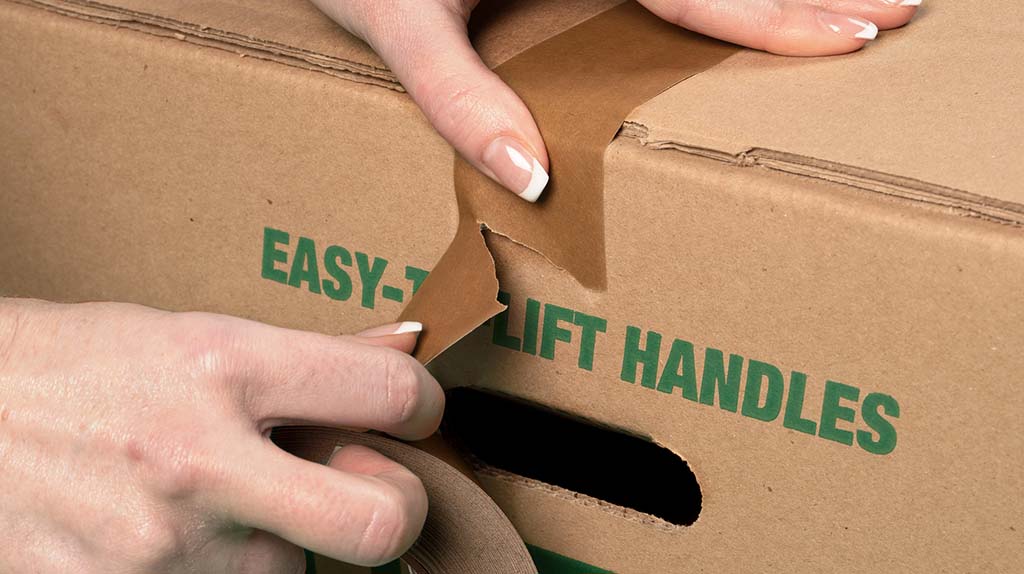
9. Research moving companies
Why waste your time having to call each moving company individually on your own? You can find many local moving labor providers on our Marketplace. We have Service Providers who have hundreds to thousands of reviews, and they can fit your exact budget and needs.
You should try to hire movers, regardless of whether they’re a full-service or moving labor company, about two months before your moving date, especially during the summer months.
10. Identify special items
If you own a piano, gun safe, heavy or valuable items, make note of them. This way, you can let your Service Provider know when they ask you about it.
11. Deep clean
You need to deep clean your home if you’re trying to sell it. It’ll make your house more desirable on the market.
12. Discuss the move with children
Children are naturally curious, so it’ll be good to explain why you’re moving to a new home.
13. Search for a new home
You’ll want to give yourself enough time to find and sign all the necessary documentation to secure your new home.
14. Find roommates
If you want to share living expenses with someone else, you should begin your search now. You’ll find a better array of candidates who are looking to end their current lease and find a new lease.
15. Limit buying brand new items
You should limit how many new belongings you purchase. The more items you have with you, the more you’ll have to move.
The exception would be large purchases, such as couches, beds, or large kitchen appliances. These items are boxed, secured, and ready to be moved. If you can, it’ll be easier to ship them to your destination, so you don’t have to travel with them, and they’ll be there after you arrive.
1 to 2 Months Before You Move
16. Research more moving companies
If you haven’t hired Moving Helpers yet, that’s OK. It’s only about one month out that you should hire providers at the latest.
17. Create a room-by-room inventory list
Although most people would rather skip this step, it’ll be helpful in the long run. If you do it, you’ll never lose an item when moving from one home to another home. If you’d rather watch paint dry than complete this step, keep an inventory of only your expensive, special, fragile, irreplaceable, or personal items.
18. Sell, donate, and throw away items to declutter
Moving is a great way to declutter your home. Go through your belongings to decide whether you can sell, donate, or throw away items.
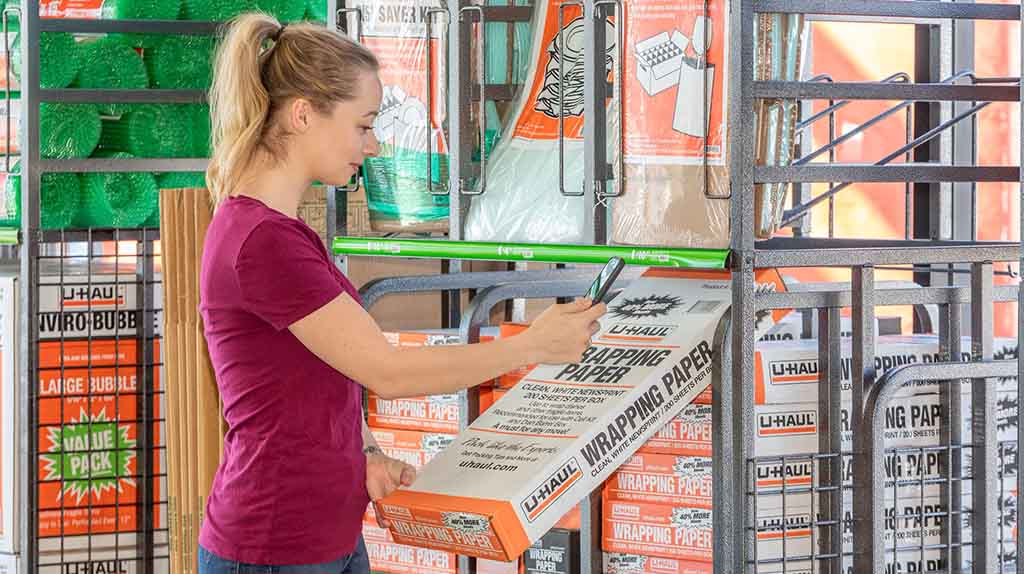
19. Collect moving boxes
Now is the time to gather all the boxes you’ll need for your move. Specialty boxes can help make your moving process simpler. The boxes below can be found at U-Haul along with many other box types.
- Medium moving boxes
- Large moving boxes
- Dish saver packing kit with box
- Glass pack kit with box
- Large wardrobe moving box
If you’re looking for gently used moving boxes, check out the U-Haul program Take a Box, Leave a Box.
20. Buy packing supplies
After collecting moving boxes, you’ll need some packing supplies. Some U-Haul supplies you might consider getting are below.
- Paper packing tape for moving boxes
- Bubble wrap
- Comforter bags pack of 2
- Dust cover
- Pillow top mattress bag
21. Start Packing
Depending on the size of your home and how many belongings you own, you may or may not need more time to pack your items. We recommend to start packing six to eight weeks before your moving date.
Unless you hired a full-service move to include packing, you’ll need to give yourself plenty of time. Not sure how to get started, check out some of our how to start packing tips.
22. Take pictures of your items
Before you close your moving boxes, you should take pictures (or videos) of what’s inside your moving boxes. Therefore, you have a record of what’s inside of each box and the items’ conditions.
23. Label moving boxes
Once you have your moving boxes and you’ve started packing, you can start labeling your moving boxes. You should carefully label what’s inside your moving boxes and not just give them generic room labels.
24. Do small repairs
If you live in a house, make sure to fix any small repairs. If you live in an apartment, call or place a maintenance request for anything that needs to be fixed.
25. Ask friends to help
Sometimes your moving budget can’t include paying someone for help. Most people don’t like asking other people to help them to move, but we have some tips on how to ask someone to help you move. Moving Help has affordable moving labor, so you might be surprised to find out how inexpensive labor-only Service Providers are for your move.
26. Reserve your rental equipment
You’ll want to make sure you get the rental equipment you need for your move, especially if you’re moving during a busy period. Get a head start on reserving your truck rental, U-Box containers, trailers, dollies, or furniture blankets.
27. Pick a moving company
By now, you should pick a moving company, especially during the summer months when it’s busy season for local movers. If you don’t hire one, you might not get the moving company you preferred, or the day of the week, or the price.
2 to 4 Weeks Before You Move
28. Get moving coverage
Some people might want moving insurance, and some people might not want moving insurance. If you need it, Moving Help offers our Safeload® coverage to customers.
29. Make travel arrangements
If you’re moving long distance, you’ll need to consider travel arrangements. Whether you’re driving or flying, you might need to purchase plane tickets, hotel arrangements, or more.
30. Tune your car
Before you go on a long road trip, you should get your car tuned up. A good oil change can help make your lengthy trip safer.

31. Contact utilities services
Most utility services will allow you to end their service within one month before your moving date. You’ll want to make sure you don’t end it the day before your moving day because otherwise, you won’t have the utilities needed on moving day.
32. Fill prescriptions
You need to make sure you get all your prescriptions filled before you move. It’ll be best to get them filled for at least the next two to four months.
33. Decide what to do with plants
Sometimes you can’t bring all your plants with you, or the state doesn’t allow certain types of plants. Either way, you’ll need to either keep them, give them away, or get rid of them. We have a few tips on how to move with plants as well.
34. Reserve moving elevator
Your new home might require you to reserve a time slot to book the elevator for moving. Book it now so you can get an ideal time slot for your move.
35. Plan out final meals
You’ll want to figure out how to use the rest of your perishables and remaining meals at your old home before moving day. This will help avoid food waste.
36. Request time off from work
Unless you’re moving on your day off from work, you’ll need to request time off in advance. Depending on your company, you may need to complete this task earlier, later, or not at all if your moving day is after you’ve left your company.
37. Get child care
If you have small children or want your children out of the way, make sure you schedule a babysitter with someone or have them go to a friend’s house on moving day.
38. Get pet sitter
If you own pets and you don’t want them locked in a room where the movers won’t go in and out of during move day, consider hiring a pet sitter.
39. Take pets to the vet
All pets should be properly vaccinated and have all necessary documentation completed before moving. This will help save you any headaches down the road.
2 Weeks or Less Before You Move
40. Change your address
You don’t want to miss out on any critical mail because you forgot to change your address. You can even skip a post office visit and fill out your new address online.
41. Give your new address to family and friends
Make sure to give your new address to family and friends, so they can update your contact information.
42. Update or cancel subscriptions
Depending on the type of subscription, you’ll need to either update it with your new address or cancel the subscription.

43. Confirm moving dates
Make sure you’ve double-checked with your local movers, pet sitters, child care services, and any other plans about your moving date.
44. Start and finish packing home essentials
You should have packed mostly everything by now, but you can begin packing more of your essentials in your home and have it finished before moving day.
45. Take photos of the wiring of your electronics
Unless you know where everything goes, it’ll be smart to snap a quick photo of how you set up your electronics. This way when you’re unpacking and putting together your gaming system with your TV, you’ll know where everything belongs.
46. Update driver’s license
You’ll need to let the DMV know about your address change. If you stay in the same state, it’ll be easier to update your driver’s license. If you move to a new state, you’ll need to go in person to get a new driver’s license.
47. Update car insurance
Car insurance companies will need to know your new address. Sometimes living in a different area could result in a lower insurance rate for your policy.
48. Clear bank safe deposit box
If you have a safe deposit box at a bank, you’ll want to get it emptied if you don’t plan on using that bank when you move.
49. Returned borrowed items
If you borrowed any items from friends, family, or neighbors, make sure you give it back to them. You don’t want to be known as that person who doesn’t return borrowed belongings.
50. Clean your old home
You should complete one final deep clean of your home before leaving. Deep cleaning your home will increase your chances of receiving your entire security deposit from your landlord.
If you don’t want to clean it yourself, you can always hire moving labor for cleaning from the Moving Help Marketplace.
51. Schedule walk throughs
If necessary, schedule a final walk through for your old home. This will be essential if you live at an apartment because you can find out whether your landlord will keep any portion of your cleaning deposit for cleaning. You also should schedule a walk through for your new apartment.
52. Plan a moving party
If you have a galactic abundance of spare time, throw a moving party with friends and family. It might be easier to meet at a restaurant or simply supply pizza and BYOD.
1 Week Before You Move
53. Disassemble big furniture items
You should start disassembling any large furniture items that you don’t need before your moving date.
54. Pack a suitcase
We recommend packing a suitcase whether you use it for books, movies, smaller but heavier items, or as your essentials bag for a short-distance or long-distance move.
55. Pack essentials bag
If you don’t use your suitcase as your essentials bag, you’ll need to pack another suitcase or bag as your essentials bag for moving day. It should include clothes, chargers, toiletries, money, dog leashes and harnesses, dog food, dog bowls, and anything else you need.
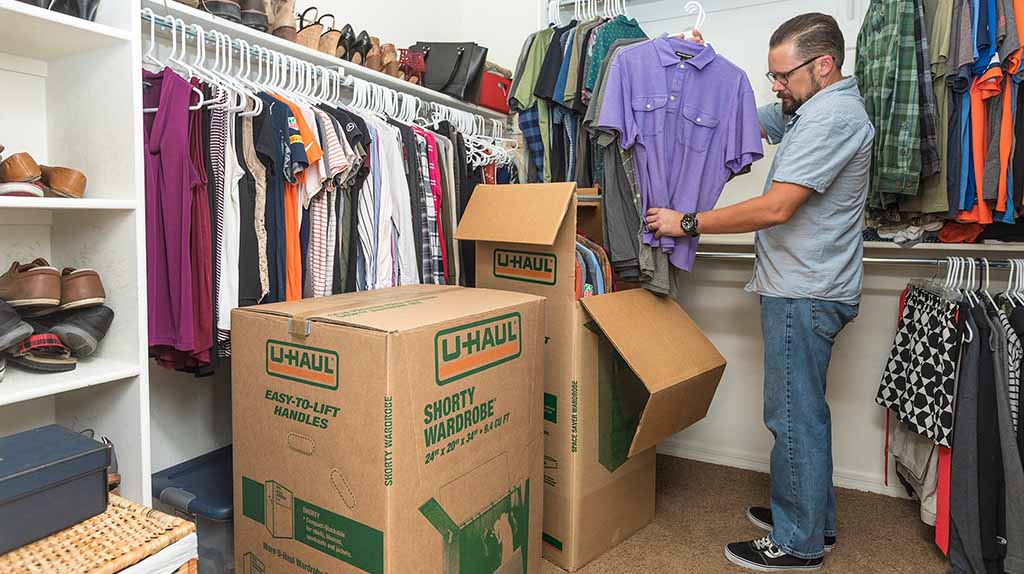
56. Collect all keys and garage door openers
Collect all keys and garage door openers and give them to the appropriate person. If needed, ask someone to verify they received all items.
57. Take pictures or video of your new move
Before you unload anything into your new home, try to take pictures and/or video of your new home. Then, you can get it in writing about any damage. When trying to get your security deposit back, this will help you highlight what was damaged already.
58. Get cash
You can make a stop at the bank, ATM, or grocery store to get cash. You’ll most likely use cash to tip your movers. You might need cash as well in case of an emergency during a long-distance move.
59. Clean your new home before unloading
Give your new home a nice scrub down before moving day. It’ll be easier to clean everything before you start moving boxes into your new home.
60. Identify what to unpack first
The first room you should unpack in your home is the most used room. You can check out our unpacking guide to help you unpack.
61. Finish all packing before moving day
Don’t wait to pull an all-nighter or try to finish packing a few hours before your movers arrive on moving day. You’ll feel way better when you get done packing early vs. scrambling at the last second.
Moving Day
Moving day has finally arrived and thanks to following the moving house checklist, you should be set up for a smooth move.
DOWNLOAD MOVING HOUSE CHECKLIST
62. Don’t oversleep alarms
Go to bed early and get a good night of sleep because you don’t want to oversleep any alarms on moving day.
63. Clear a path for movers
To save time and possibly money, make sure you’ve cleared a walkable path for your movers to go quickly in and out of your home whether loading or unloading.
64. Protect floors and carpet
If it’s important to you, you should protect your floors and carpet from damage. You can lay down furniture blankets or cardboard boxes on the walking path for the movers.
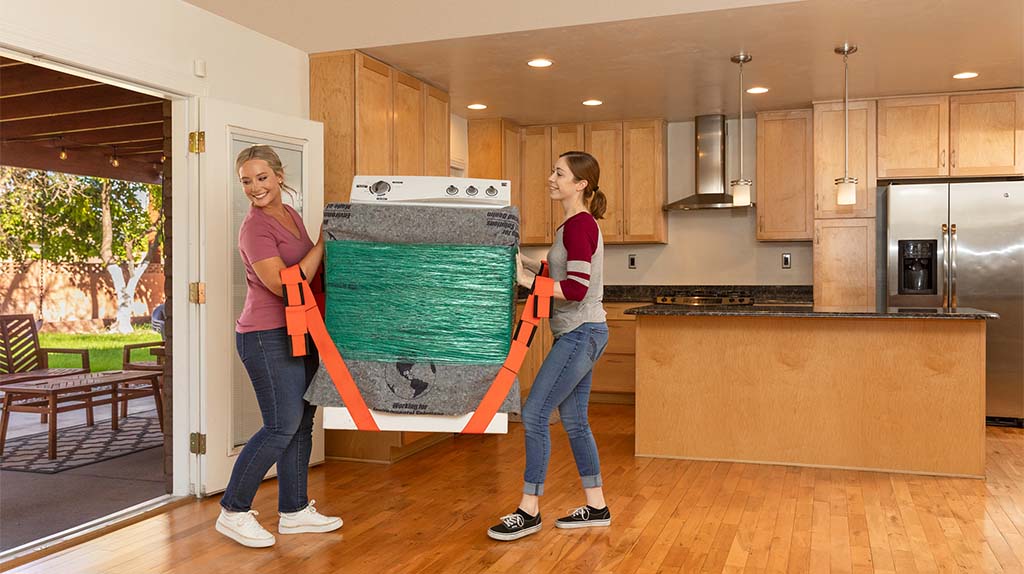
65. Be available to answer your mover’s questions
You should be present while your movers are moving your belongings. While they won’t need your help to move items, they might ask questions about your belongings, where boxes need to go, or other questions about your move.
66. Provider water (and food)
While not required, it’s a nice suggestion to offer water to your movers. If it’s an all-day move and you want to provide food, ask your movers ahead of time what they’d like to eat and to be aware of any allergy restrictions. It’s OK if they decline water or food.
67. Conduct a moving walk-through
Either by yourself or with your movers, you should go through your home one last time to make sure nothing was left behind that you need your movers to load.
68. Tip your movers
You can either tip Moving Help Service Providers with cash, or you can tip your local moving labor online when leaving a review. Make sure you give the tip to each mover individually vs. just to the lead mover.
After Moving Day
69. Put together beds
Unless your movers assembled your beds, you’ll want to assemble everyone’s beds, so everyone can get a good night’s rest after a long day.
70. Set up bathroom
You’ll want to get the basic toiletries out of the way in the bathroom. That way, you can use the restroom without needing to find toilet paper or take a shower but only finding washcloth towels.
71. Go grocery shopping
You probably moved with zero or few groceries to your new home, so now take the opportunity to go grocery shopping for all your perishable and non-perishable foods.
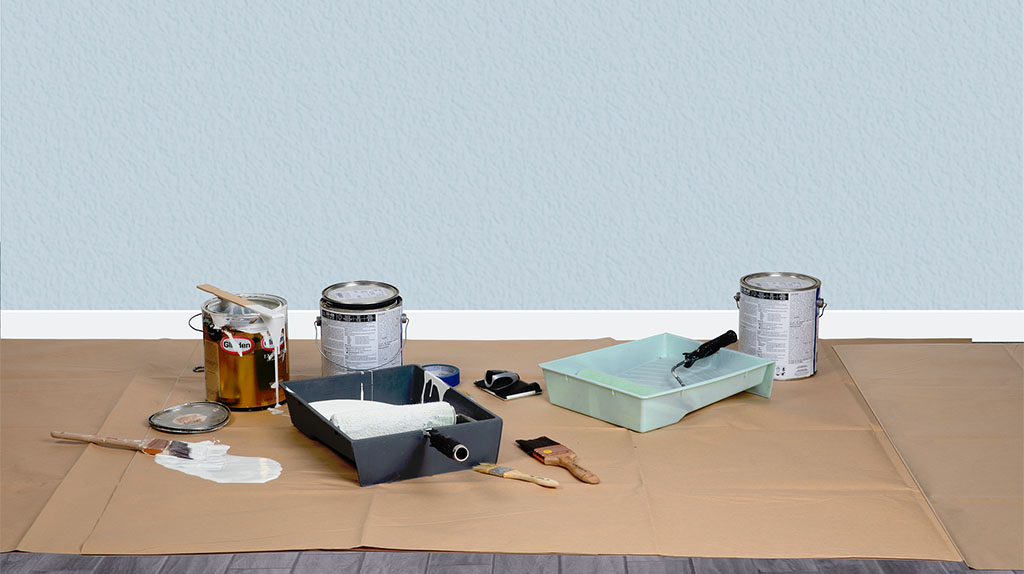
72. Change locks
You’ll want to change the locks on your new home. That way, no one accidentally has a spare key to your home.
73. Check utilities
You should make sure all utilities are working in your new home. Call whoever is needed if your utilities aren’t working.
74. Understand HOA policies
If you live in a HOA neighborhood, you’ll want to go over all HOA policies, so you don’t accidentally break one.
75. Plan housewarming party
Start planning to invite friends, family, neighbors, or anyone else to your new home. Bonus points if you’re done unpacking before your housewarming party date to truly display your exciting new living space.
76. Leave a Moving Help review
Reviews are crucial for moving labor providers on our Marketplace, and they need to earn perfect reviews to stay at the top of their local area. Please take some time to submit a Moving Help review — good or bad — so your helpers and other potential customers can read about your moving experience.
77. Send thank you notes
Send thank you notes to anyone who helped you greatly during your move. One thank you note can make someone’s day.
2 Weeks After Moving Day
78. Finish unpacking
Depending on how fast you want to unpack and how many items you own, you might be done unpacking after two weeks since your moving day. If you’re not done yet, don’t sweat it.
79. Make spare keys
Take the time to create spare keys for anyone who needs a spare key to your new home.
80. Host a housewarming party
Remember when you planned your housewarming party? Well, the huge night is here, and it’s time for a fun get-together.

81. Save moving binder
If you think you’ll move in the near future, you might consider saving your moving binder, so you can easily reference it next time.
82. Say hello to the neighbors
If you haven’t already introduced yourself or met your neighbors passing by down your street, now is the time to get to know who lives next to you.
83. Understand trash schedule
Look it up online or ask a next-door neighbor about the trash schedule. If your HOA has a policy about trash day, make sure you follow it carefully.
84. Update voter registration
You can update your voter registration when you update your driver’s license. If you moved to a new state or you haven’t done that yet, make sure you take the time to be properly registered to vote at your new address.
85. Babyproof the new home
You’ll need to make sure your new home is babyproofed for your baby or toddler.
86. Check smoke alarms
Double check that all smoke alarms are functioning. If not, make sure you get them working properly soon.
1 Month After Moving Day
87. Check on the return of your security deposit
Check your state’s rules on when you should receive your security deposit, but it should be between 14 to 60 days depending on your state. It’ll be a good checking point on seeing when you’ll receive it 30 days after your lease has ended.
88. Call for pest control
It’s a good idea to hire pest control to make sure pests stay out of your home.
89. Register your pet
Your county or city might require you to register your pet so make sure to take care of all proper documentation.

90. Schedule an electrician
If you’re having problems with your lights, schedule an electrician to check them out.
91. Sit back and relax
You’ve worked hard for quite some time already, and if you haven’t done it yet, take a moment to sit back and relax for all that you’ve accomplished so far.
92. Celebrate!
This is the easiest step on our checklist. Celebrate however you want about your new home and move.
Need a Moving Company Now?
If you’ve gotten to the end of this list and you still don’t have moving labor, consider hiring Moving Help for:
Moving Help will make sure your moving experience goes smoothly and less stressful. Additionally, we offer Safeload coverage, which is our moving insurance.
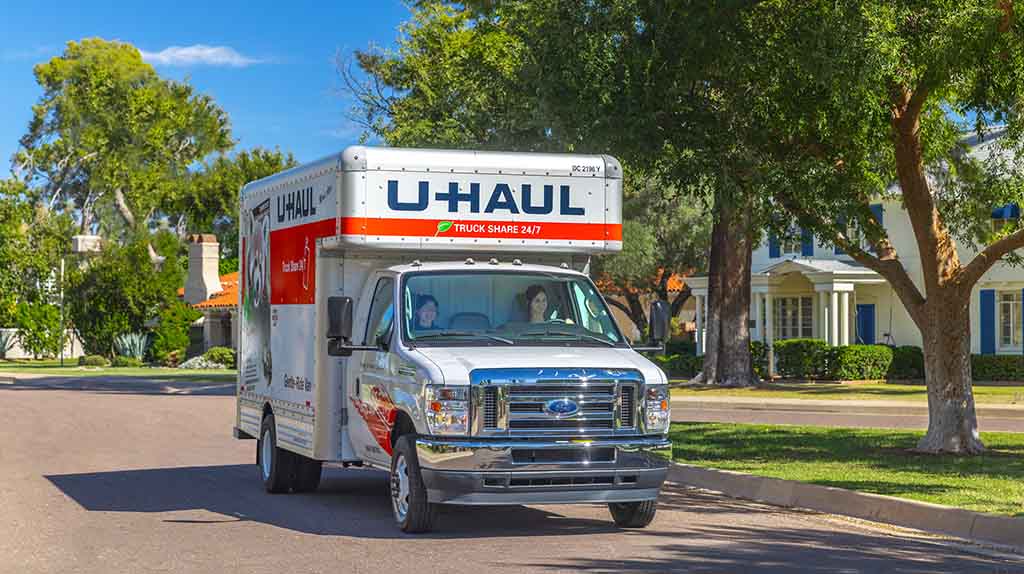
It can be hard to pack up all your belongings and move onto a new chapter in your life, but Moving Help will be there for you to make sure your transition is easy, safe, and reliable when it comes to moving.
Other Checklists
- Apartment moving checklist
- Apartment inspection checklist
- Apartment cleaning checklist
- Office relocation moving checklist
Feel Prepared on Moving Day
Our checklist is extensive, so you won’t forget anything when moving from your old home to your new home. Whether you’re moving out for the first time or are a moving pro, Moving Help wants to make sure you have everything potentially covered for your move.
DOWNLOAD MOVING HOUSE CHECKLIST
You might not need to complete every step off our moving house checklist, but you won’t be left wondering whether you forgot something about your move.
